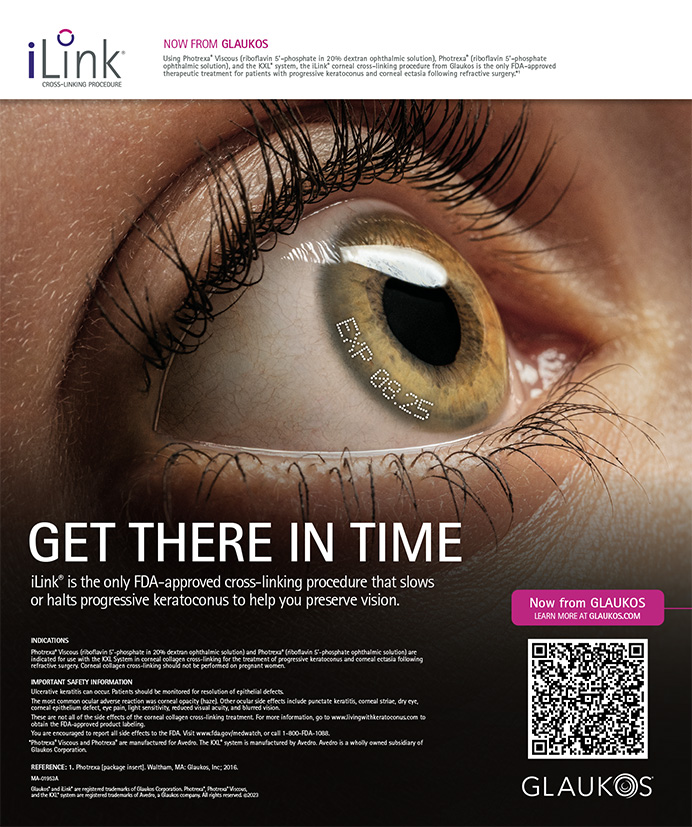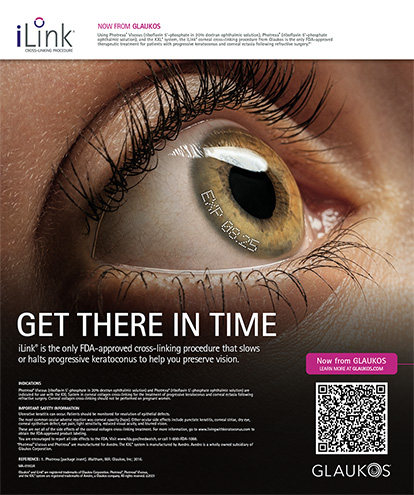Imagine that you performed several uncomplicated surgeries yesterday. The first patient you see today with moderate pain, horrible vision, profound corneal edema, and unusual inflammation and hypopyon is enough to make your heart stop. When you realize that, of your eight postoperative patients, all have unusual inflammation and three cases are severe, you wonder if you ever want to practice medicine again. Such has been the story reported to me, including by one of my former fellows, who seriously considered giving up surgery. It is the horror of toxic anterior segment syndrome (TASS). One problem is that TASS and endophthalmitis can appear exactly the same, but the treatment for each is different. TASS can improve in time without a special treatment, whereas a diagnosis of endophthalmitis must be made as soon as possible in order to potentially achieve a good result. Distinguishing between the two conditions is therefore an important factor in dealing with either disease determining a diagnosis is not an academic exercise as more ophthalmologists encounter TASS. In fact, I know my colleagues feel that this complication is dramatically underreported because many cases of unusual inflammation were probably TASS that resolved and thus remained undiagnosed.I believe it is possible to tell the difference between the two types of inflammation most of the time. A few signs and symptoms can help ophthalmologists decide the best course of treatment when examining the patient.
CLINICAL FINDINGS
Timing of the Disease
Because TASS is a toxic insult, it virtually always shows up as an unusual inflammation on the day after surgery. Although endophthalmitis can manifest 1 day postoperatively, the Endophthalmitis Vitrectomy Study1 has shown that most cases of endophthalmitis do not show up until later. Therefore, unusual changes on the day after surgery may indicate TASS, but alone this finding is not definitive.
Pain
Although both TASS and endophthalmitis can cause significant or no pain, it has been my and my colleagues' experience that pain more often indicates endophthalmitis. Unless the IOP is very high, TASS is associated with remarkably little pain but significant inflammation. Again, this is a differentiating point that is helpful but not definitive in regard to determining whether or not a patient has TASS.
Conjunctival and Lid Reaction
Because TASS represents a localized chemical or toxic reaction in the intraocular anterior segment, it is often surprising how little conjunctival or scleral injection is seen at presentation. Furthermore, lid swelling is uncommon. The presence of conjunctival or lid injection and swelling therefore suggest endophthalmitis.
Corneal Edema
It is exceedingly rare to have limbal-to-limbal, 360? corneal edema on the first postoperative day. Even corneal edema caused by complicated and difficult cataract surgery (eg, with Fuchs' corneal dystrophy) is generally sectorial and often most noticeable near the wound or centrally and opposite the wound where most of our surgery is performed. Ninety degrees away, surgeons can find patches of cornea without edema. With TASS, all of the endothelium functions poorly. Limbus-to-limbus edema is thus a very important differentiating finding. If this symptom is present on the first postoperative day, you can feel at least 95 confident that the problem is TASS. Nonetheless, endophthalmitis should never be eliminated as a diagnosis until the therapeutic response is measured!
Iris Findings
In an eye with TASS, a fixed, dilated pupil–often with spotty or diffuse areas of iris atrophy–is not uncommon. That finding is unlikely in endophthalmitis. Be aware that iris damage associated with TASS only occurs in some cases, however.
IOP
TASS can have a profound impact on the trabecular meshwork. Depending upon the amount of inflammation, there may be some ciliary body shutdown and hypotony, but many eyes have severely elevated IOP, often as high as 50 to 60mmHg. Extremely high IOP early in the postoperative period is an unusual finding for endophthalmitis and points toward a diagnosis of TASS. The trabecular meshwork is one of the less sensitive structures. Surgeons may encounter many cases with profound corneal edema and a largely unresponsive pupil without damage to the trabecular meshwork.
Therapeutic Response
If you suspect TASS, then the patient's therapeutic response to topical steroids is the definitive test. Assume TASS with any eye that exhibits an unusual amount of inflammation and limbus-to-limbus corneal edema on the first postoperative day until proven otherwise. These patients should receive frequent (every 30 to 40 minutes) drops of topical steroids and remain in the office to be monitored during the day. Steroids can suppress inflammation from endophthalmitis for a short period of time. If the patient is no worse by the end of the day, however, you can assume TASS is the problem. If you sense that the patient's condition is worsening despite steroid treatment, then endophthalmitis is the likely diagnosis, and the patient should be treated promptly. Regardless of how the patient responds to steroids during the day, he should be seen promptly the next day and monitored on a daily basis until a diagnosis is absolutely certain.
CONCLUSION
My colleagues and I feel quite comfortable distinguishing between the two conditions in regard to the initial treatment. Never take TASS lightly however. Until a therapeutic response to topical steroids is clearly present for several days, endophthalmitis should be a consideration. Fortunately, the clues outlined herein should facilitate the differential diagnosis.
Randall J. Olson, MD, is the John A. Moran Presidential Professor, Chair of Ophthalmology, and CEO of the John A. Moran Eye Center at University of Utah Health Sciences in Salt Lake City. He is a consultant to Allergan, Inc. Dr. Olson may be reached at (801) 585-6522; randall.olson@hsc.utah.edu.


